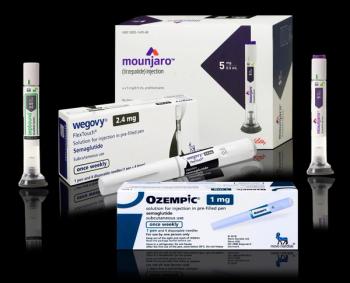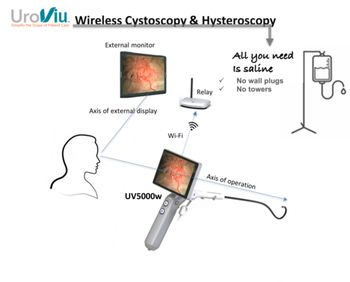
- Medical Economics May 2021
- Volume 98
- Issue 5
Roth IRA strategies can save you money in retirement
In retirement, tax-free income is the ideal way to take distributions, and a Roth IRA remains one of the best ways to get that benefit.
An internist client of mine in Pittsburgh retired recently. The theme that always comes up is how much he and his wife miss traveling. My client worked throughout his career to reduce his tax burden by contributing pre-tax funds into his retirement account.
As he nears 70, he’s concerned about the required minimum distribution (RMD), which will kick in soon. He has accumulated a large portion of his net worth in pre-tax 401(k) and individual retirement accounts (IRAs), and the reality of the hefty taxes that will be levied on his upcoming distributions is a major concern. The SECURE Act, which was passed at the end of 2019, didn’t help—it killed the stretch IRA strategy by making it mandatory that a non-spouse beneficiary exhaust an inherited IRA within 10 years after both spouses pass away.
This is a common situation for high earners such as physicians during retirement, as many in the medical field are in the highest tax bracket. In retirement, tax-free income is the ideal way to take distributions, and a Roth IRA remains one of the best ways to get that benefit.
However, high earners such as physicians may feel locked out of some tax-free withdrawal options as their high income disqualifies them from opening Roth IRA accounts. They may be unaware of tools that could be at their disposal to get those same benefits, such as the backdoor Roth IRA and Roth IRA conversions.
So, what is a Roth IRA?
With a Roth IRA, the investor pays taxes on the money funding the account up front, unlike a traditional IRA, where the money is taxed when it is withdrawn. As long as funds are in the account, the assets grow tax-free, and future withdrawals are tax-free, as well. They tend not to be vehicles for high earners; if an investor makes too much money, they cannot use a Roth IRA.
The limit for single individuals in 2021 is $140,000, and for married couples the current limit is $208,000. Roth IRAs work well as a strategy when it seems that taxes will be higher in retirement than they are when funding the account. However, there are no age limits for contributions, and the account can be held indefinitely without the required distributions that are a feature of traditional IRAs.
Are there contribution limits in a Roth IRA?
Unlike those made to other types of accounts, contributions to a Roth IRA must be in cash rather than in assets. The annual limit amount is sometimes adjusted by the Internal Revenue Service; for 2020, the limit is $6,000 for the year. There is an exception for those over 50; those individuals can contribute up to $7,000 annually. There is no tax deduction available for Roth IRA contributions.
What are the benefits of a Roth IRA?
There are several benefits to Roth IRA accounts. Money contributed to the account can be withdrawn at any time. Investment returns taken as distributions may be taxed as income or changed an early distribution tax, so it makes sense to leave that money in the account longer. There is also no RMD requirement in Roth IRAs, as there is in a traditional IRA, and no tax on any distributions after age 59½, again unlike traditional IRA accounts, which makes them very attractive for tax-free growth and income.
If someone’s income is too high, are there other ways to contribute to a Roth IRA?
There are several ways high earners can contribute to a Roth IRA, including the 401(k) Roth IRA, a backdoor Roth IRA and a Roth IRA conversion.
What is a Roth 401(k)?
By adding a Roth IRA option to a 401(k), the hybrid product offers unique benefits. This plan allows both employers and employees to continue post-tax earnings to their accounts. This little- to no-cost addition to a 401(k) means that the tax-free growth of those funds as well as the tax-free later withdrawal found in a classic Roth IRA account are now features of the plan. This option is often seen as a good strategy for owners or highly compensated employees who earn too much to open regular Roth IRA accounts. The Roth 401(k) lacks any income cap, so high earners can use it to gain Roth IRA benefits that would otherwise be closed to them. The contribution limits in this type of account are based on age, with a current limit of $19,500, however, individuals over 50 may contribute an additional $6,500.
Also, upon retirement or leaving employment, an investor may convert the Roth 401(k) to a Roth IRA and avoid the RMD that would be required from a rollover IRA.
What is a backdoor Roth IRA?
Although Roth IRAs are not usually available to high earners because of their level of income, there is a way to reap the benefits. A backdoor Roth IRA is not a type of Roth IRA but rather a strategy, and it is one of the most underused by physicians. It entails contributing money to a traditional IRA then doing a Roth IRA conversion and paying owed upfront taxes at that time. There is no income limit on a conversion of this type, so the funds are now properly established to gain the benefits of a Roth IRA.
For a larger funding amount, a married investor can make contributions for 2020 and 2021 together and then do the Roth IRA conversion, meaning $14,000 for the investor and then $14,000 for their spouse.
What are the benefits of a backdoor Roth IRA?
There are many advantages to saving with a Roth IRA. By doing a Roth IRA conversion, there is no tax on the principal. The money in the account grows tax-free and future withdrawals are tax-free, just as if the account had been a Roth IRA account all along. As traditional IRAs have no income or conversion limits, if an individual already has money sitting in an existing IRA, that also can be converted.
Here’s an example of growth in a Roth IRA: A married couple each contributes $7,000 to Roth IRAs to start, and then an additional combined $14,000 annually for the next 20 years. Considering a 7% rate of return, at the end of the 20-year period, they will have more than $668,000 from just those two Roth IRAs. When they take withdrawals, all of the income from those distributions will be tax-free.
What are the disadvantages of a backdoor Roth IRA?
One issue is the pro-rata rule if you have an existing IRA account open. In the case of converting an already existing traditional IRA account, the IRS considers the combined balance of all of the investor’s traditional IRA accounts when determining how much tax is owed on the converting funds. If, the investor has 70% pre-tax money and 30% after-tax money, that is the ratio that will determine what percentage of converted money will be taxable. No matter how much is converted or from which IRA account, 70% of the converted amount will be taxable. This pro-rata rule is applied using the investor’s total IRA balance at year end.
What is the solution for the disadvantages of the pro-rata rule?
One option could be to move traditional IRA funds to a 401(k) or other qualified employer plans, as 401(k) amounts do not count toward the balance used to determine the percentage of taxed money for the Roth IRA conversion. After this, a new traditional IRA can be opened, then that can be converted to a Roth IRA as planned. These are complicated strategies, however, and it’s best to speak to a financial adviser who will look at your full tax situation before including solutions such as these in a retirement plan.
What about a simple Roth IRA conversation?
There is no income restriction on Roth IRA conversion. If an individual already has money sitting in an existing IRA account, that can all be converted to a Roth IRA. However, taxes are a consideration when deciding if a Roth IRA conversion is a good fit for an investor. As the taxes will have to be paid up front when the traditional IRA is converted, it makes sense to analyze what the tax bill will look like at that time. Particularly for older clients, it is important to see if the amount of taxes paid will outweigh the benefits of the potential Roth IRA. An ideal situation for a conversion is when the market is down with an expected recovery.
Is a backdoor Roth IRA or ROTH conversion the best strategy for me?
Because careful planning is required to get a backdoor Roth IRA set up or to get a Roth conversion moving and to make sure it’s the best fit for your situation, it’s wise to consult with an experienced financial adviser who will take the time to do a thorough analysis of your personal situation and work with you to find the best strategies to secure your financial future.
Syed Nishat, BFA, is a partner at Wall Street Alliance Group.
Securities offered through Securities America, Inc., member FINRA/SIPC. Advisory services offered through Securities America Advisors, Inc. Wall Street Alliance Group and Securities America are separate companies. Securities America and its representatives do not provide tax or legal advice, therefore, it is important to coordinate with your tax or legal adviser regarding your specific situation.
Articles in this issue
over 4 years ago
2021 Financial Advisor Guide for Physiciansover 4 years ago
Better ways to play the prior authorization gameover 4 years ago
Permission denied: Why prior authorizations aren't going awayover 4 years ago
Passive real estate investing helps physicians build wealthover 4 years ago
How to find the best financial advisor for youover 4 years ago
Let’s use the pandemic to change health care for the betterover 4 years ago
What physicians need to know about cyber liability insuranceover 4 years ago
Are you prepared for a disaster?over 4 years ago
Do a checkup on your debtNewsletter
Stay informed and empowered with Medical Economics enewsletter, delivering expert insights, financial strategies, practice management tips and technology trends — tailored for today’s physicians.



















